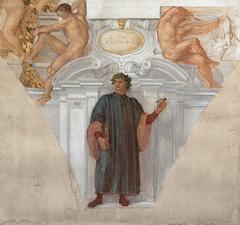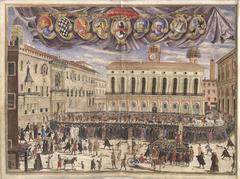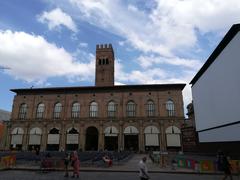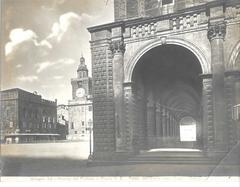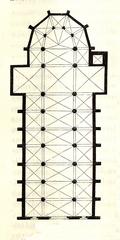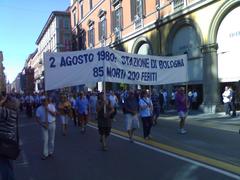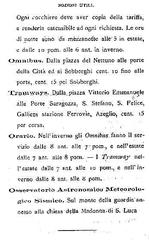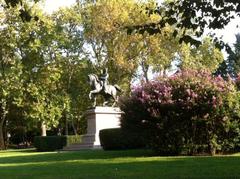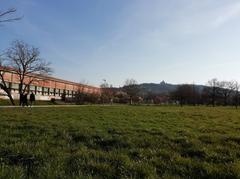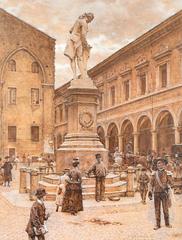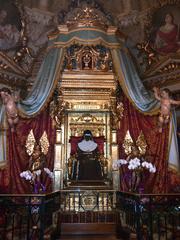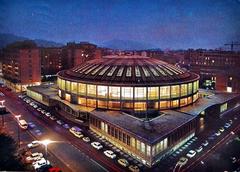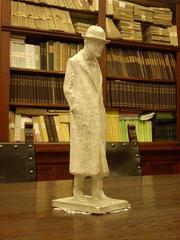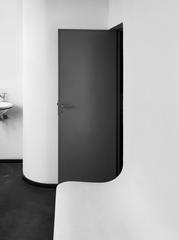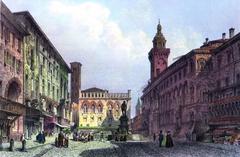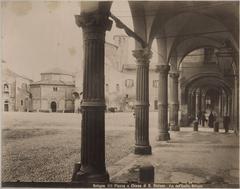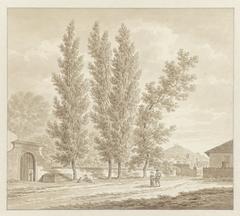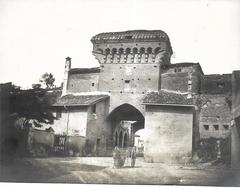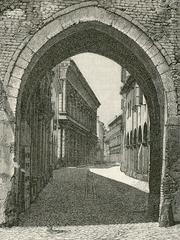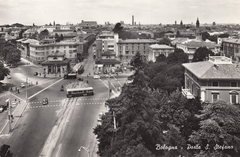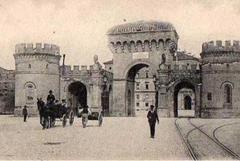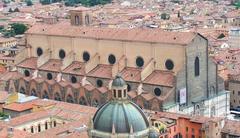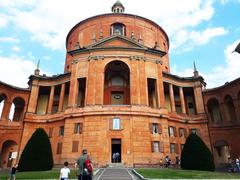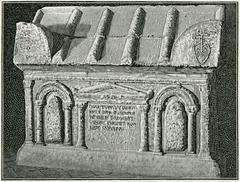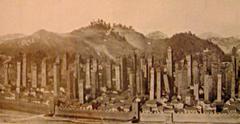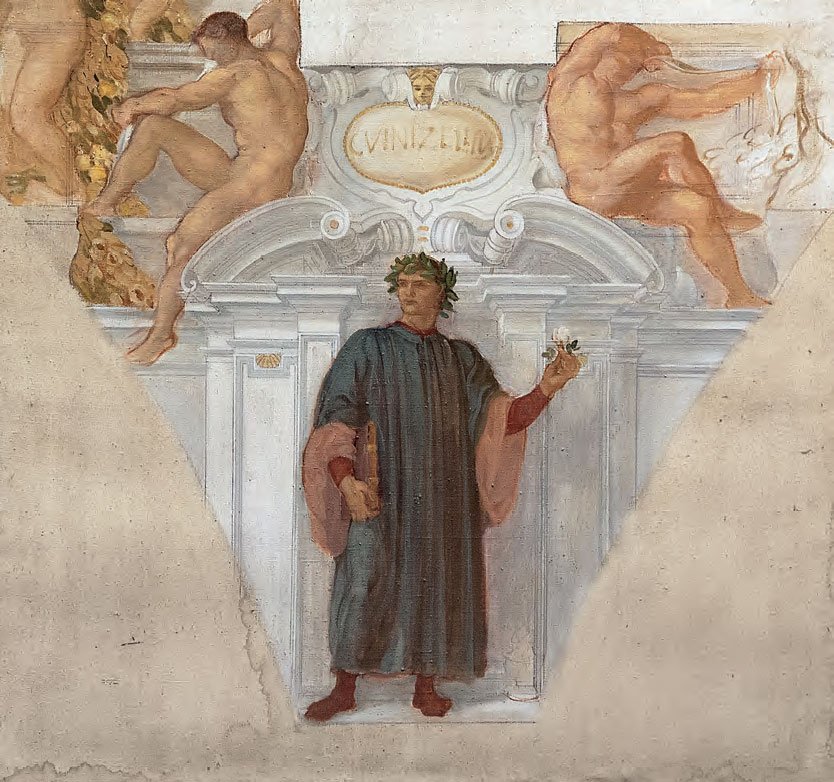
Salone della Podestà Visiting Hours, Tickets, and Historical Sites in Bologna
Date: 19/07/2024
Introduction
Nestled in the heart of Bologna, Italy, the Salone della Podestà is a monumental hall steeped in rich history and cultural significance. Housed within the historic Palazzo Re Enzo, this architectural marvel has served various civic, judicial, and cultural functions since its construction in the 13th century (Bologna Welcome). The hall’s vast dimensions, adorned with Gothic architectural elements and exquisite frescoes, make it a testament to medieval ingenuity and Renaissance artistry. Over the centuries, it has evolved from a center of political activity to a vibrant cultural hub, hosting concerts, exhibitions, and conferences. Today, the Salone della Podestà stands as a symbol of Bologna’s enduring heritage, attracting tourists, scholars, and history enthusiasts from around the world. This comprehensive guide aims to provide an in-depth exploration of the Salone della Podestà, including its historical significance, visitor information, and travel tips to ensure a memorable visit.
Table of Contents
- Introduction
- History of Salone della Podestà
- Visitor Information
- Social, Educational, and Economic Significance
- Preservation and Conservation
- Conclusion
- FAQ
History of Salone della Podestà, Bologna, Italy
Origins and Early History
The Salone della Podestà, located in the Palazzo del Podestà in Bologna, Italy, is a significant historical and architectural landmark. The Palazzo del Podestà itself was constructed in 1201 as the seat of the Podestà, the chief magistrate of the city. The Salone della Podestà, the grand hall within the palace, was initially used for civic and judicial functions. This hall is one of the earliest examples of a large public space designed for administrative purposes in medieval Italy.
Architectural Evolution
The Salone della Podestà underwent several modifications over the centuries. Originally, the hall was a simple, functional space. However, during the 15th century, it was significantly renovated under the direction of architect Aristotile Fioravanti. Fioravanti, known for his work on the Kremlin in Moscow, introduced Gothic elements to the hall, enhancing its aesthetic appeal. The hall’s wooden ceiling, which is a masterpiece of medieval engineering, was also constructed during this period.
Renaissance and Baroque Periods
During the Renaissance, the Salone della Podestà continued to serve as a central venue for civic activities. It was during this time that the hall began to be adorned with frescoes and other artworks. Notably, the hall features frescoes by Bartolomeo Cesi, a prominent Bolognese painter of the late Renaissance. These artworks depict various historical and allegorical scenes, reflecting the humanist ideals of the period.
In the Baroque period, the hall’s function shifted somewhat as it began to host more cultural events, including theatrical performances and public ceremonies. This period also saw the addition of more elaborate decorations, including stucco work and gilding, which added to the hall’s grandeur.
19th and 20th Centuries
The 19th century was a period of significant change for the Salone della Podestà. Following the unification of Italy, the hall was repurposed for various administrative functions. However, it also became a symbol of Bologna’s rich cultural heritage. In the late 19th century, the hall underwent restoration to preserve its historical features. This restoration was part of a broader movement to protect and celebrate Italy’s architectural heritage.
During the 20th century, the Salone della Podestà continued to be a focal point for civic and cultural activities. It was during this time that the hall was equipped with modern amenities to accommodate a wider range of events. Despite these modernizations, care was taken to preserve the hall’s historical integrity.
World War II and Post-War Restoration
World War II had a significant impact on Bologna, and the Salone della Podestà was not spared. The hall suffered damage during the bombings, which necessitated extensive post-war restoration efforts. These efforts were guided by a commitment to restore the hall to its former glory while incorporating necessary structural reinforcements.
The post-war period also saw the hall being used for various cultural and educational purposes. It became a venue for exhibitions, conferences, and other events that highlighted Bologna’s historical and cultural significance.
Recent Developments
In recent years, the Salone della Podestà has continued to evolve as a cultural and historical landmark. The hall has been the subject of ongoing preservation efforts to ensure that its architectural and artistic features are maintained for future generations. These efforts have included the use of advanced conservation techniques to protect the hall’s frescoes and other artworks.
Today, the Salone della Podestà is a popular destination for tourists and scholars alike. It serves as a testament to Bologna’s rich history and its enduring commitment to preserving its cultural heritage. Visitors to the hall can explore its architectural features, admire its artworks, and learn about its historical significance through various exhibitions and guided tours.
Visitor Information
Opening Hours and Ticket Prices
- Opening Hours: The Salone della Podestà is open daily from 10 AM to 6 PM.
- Ticket Prices: General admission is €10, with discounts available for students and seniors.
Accessibility
The hall is wheelchair accessible, with ramps and elevators available for ease of access.
Travel Tips and Nearby Attractions
- Best Time to Visit: Early mornings or late afternoons to avoid crowds.
- Nearby Attractions: Don’t miss the nearby Piazza Maggiore and the Basilica of San Petronio.
Notable Events and Figures
Throughout its history, the Salone della Podestà has been associated with numerous notable events and figures. For instance, it was in this hall that the famous Bolognese jurist Irnerius taught his students in the 12th century, laying the foundations for the University of Bologna, the oldest university in the world. The hall has also hosted various important civic ceremonies, including the swearing-in of new Podestàs and other officials.
In the modern era, the Salone della Podestà has been the venue for numerous cultural events, including concerts, art exhibitions, and literary festivals. These events have helped to reinforce the hall’s status as a vibrant cultural hub in the heart of Bologna.
Social, Educational, and Economic Significance
Social Significance
The Salone della Podestà has also played a significant role in the social life of Bologna. Throughout its history, the hall has been a gathering place for the city’s residents, serving as a venue for public meetings, celebrations, and social events. The hall’s central location in the heart of Bologna makes it easily accessible, further enhancing its importance as a social hub.
In recent years, the Salone della Podestà has continued to serve as a venue for various social events, including weddings, banquets, and conferences. The hall’s historical ambiance and architectural beauty make it a sought-after location for special occasions. The continued use of the Salone della Podestà for social events underscores its enduring significance in the life of the city (Comune di Bologna).
Educational Significance
The Salone della Podestà is also an important educational resource. The hall’s rich history and architectural features provide valuable learning opportunities for students and researchers. Educational tours and programs are often organized to help visitors understand the historical and cultural context of the hall. These programs are designed to engage visitors of all ages, making the Salone della Podestà an important site for educational enrichment.
In addition to guided tours, the Salone della Podestà also hosts lectures, workshops, and seminars on various topics related to history, architecture, and art. These educational activities contribute to the dissemination of knowledge and the promotion of cultural heritage. The hall’s role as an educational resource highlights its significance as a center for learning and intellectual engagement (Bologna University).
Economic Significance
The Salone della Podestà also has economic significance for Bologna. As a major tourist attraction, the hall draws visitors from around the world, contributing to the local economy. The influx of tourists generates revenue for local businesses, including hotels, restaurants, and shops. The economic impact of tourism related to the Salone della Podestà underscores its importance as a driver of economic growth and development.
In addition to tourism, the Salone della Podestà also generates revenue through the hosting of events and activities. The hall’s rental fees for weddings, conferences, and other events provide a source of income that supports its maintenance and preservation. The economic benefits associated with the Salone della Podestà highlight its significance as an asset to the city of Bologna (Bologna Tourism).
Preservation and Conservation
The preservation and conservation of the Salone della Podestà are of paramount importance to ensure its continued significance. Efforts to maintain and restore the hall are ongoing, with a focus on preserving its historical and architectural integrity. Conservation projects often involve collaboration between local authorities, heritage organizations, and experts in the field of restoration.
One of the key challenges in preserving the Salone della Podestà is addressing the wear and tear caused by time and environmental factors. Restoration efforts aim to repair and stabilize the structure while maintaining its original features. The use of modern technology and techniques in conservation work helps to ensure that the hall remains a valuable cultural and historical asset for future generations (Italian Ministry of Culture).
Conclusion
The Salone della Podestà in Bologna, Italy, is more than just an architectural gem; it is a living monument to the city’s rich historical and cultural heritage. From its origins as a center of civic and judicial activities to its current role as a vibrant cultural venue, the hall has witnessed and contributed to significant historical events over the centuries. Visitors today can marvel at its Gothic architecture, enjoy its frescoes, and participate in various cultural events hosted within its walls. The comprehensive visitor information, including opening hours, ticket prices, accessibility, and nearby attractions, ensures that every visitor can fully appreciate and enjoy their experience at the Salone della Podestà. Ongoing preservation efforts highlight the commitment to maintaining this historical treasure for future generations. Whether you are a history buff, an architecture enthusiast, or a casual traveler, the Salone della Podestà offers a unique and enriching glimpse into Bologna’s past and present. For more detailed information and updates, be sure to visit the Bologna Welcome website.
FAQ
- What are the visiting hours of Salone della Podestà?
- The hall is open daily from 10 AM to 6 PM.
- How much are tickets to the Salone della Podestà?
- General admission is €10, with discounts for students and seniors.
- Is the Salone della Podestà wheelchair accessible?
- Yes, the hall is wheelchair accessible with ramps and elevators available.
- Can I take photographs inside the Salone della Podestà?
- Photography is allowed, but the use of flash and tripods is typically prohibited. Always check the specific guidelines posted at the entrance.
References
- Exploring the Salone della Podestà in Bologna - History, Tickets, and Visiting Hours. (2023). Retrieved from Bologna Welcome
- Exploring the Salone della Podestà - History, Tickets, and Visitor Information in Bologna. (2023). Retrieved from Emilia Romagna Turismo
- Essential Visitor Tips for Exploring Salone della Podestà in Bologna - Hours, Tickets, and More. (2023). Retrieved from Bologna Musei
